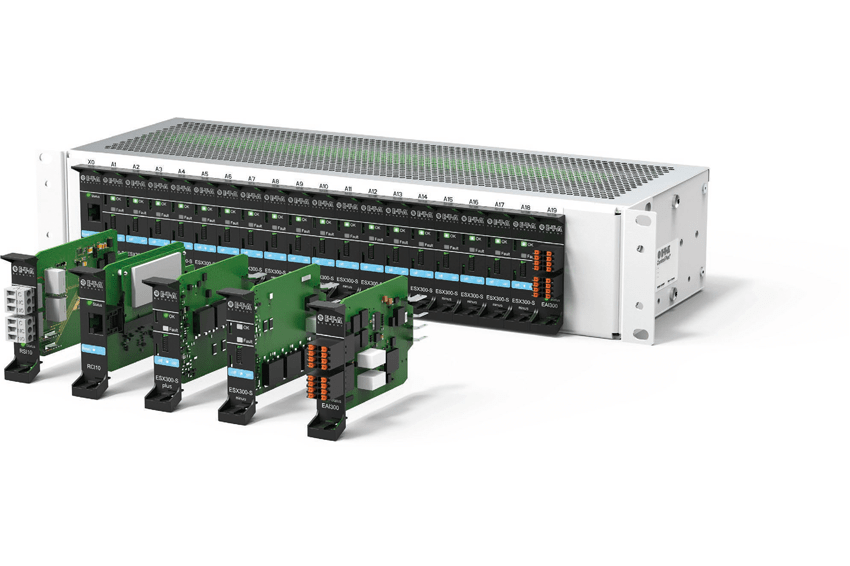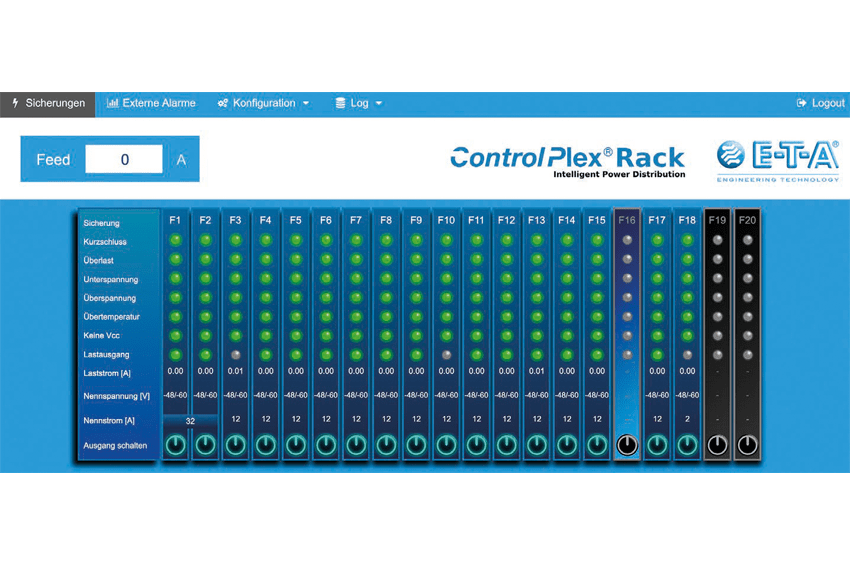A step towards climate-neutral IT infrastructure
31.05.2023 - Sustainably reduce energy costs with intelligent power distribution systems
The more powerful a data center is, the more energy and cost-intensive it is. As energy saving is demanded for several reasons, companies need to optimize their power consumption. In addition to power distribution and overcurrent protection, an intelligent power distribution system offers the option of switching consumers on a time- or event-controlled basis using an intelligent control module.
The subject of saving energy is on everyone's lips, not least because of the rise in energy costs. In addition to this economic aspect, the legislator also defines the legal framework for energy savings with the new Energy Efficiency Act (EnEfG). In addition, with the European Green Deal, the European Union has set itself the goal of becoming the world's first climate-neutral continent by 2050. All of these sporting goals ensure that companies are desperately looking for ways to optimize their business processes and production systems to minimize power consumption. Particular attention is paid to the area of communication technology and data centers. On the one hand, their infrastructure forms the backbone for digital change, but at the same time it is electricity-intensive and therefore offers considerable savings potential. The ControlPlex Rack power distribution system is designed for this industry and, in addition to power distribution and overcurrent protection, offers the option of switching consumers on a time- or event-controlled basis using an intelligent control module. This allows energy consumption and thus energy costs to be reduced in the long term.
Power Usage Effectiveness (PUE)
An important technical indicator of data centers is the Power Usage Effectiveness (PUE). It puts the energy consumed in a data center in relation to the energy consumption of the IT infrastructure. The bad news: the more powerful a data center is, the more energy-intensive and therefore cost-intensive it becomes. This is due to the constantly increasing volume of data due to new applications from Internet TV to cloud computing. By 2025, operators will have to demonstrate a PUE of 1.3 for their data centers in Germany. It is also mandatory that 75 percent of the energy consumed comes from sustainable and renewable sources. With the ControlPlex Rack system, E-T-A offers a component that also makes a meaningful contribution to climate-neutral IT infrastructure in the area of power distribution.
Intelligent power distribution
How is the ControlPlex Rack different from conventional power distribution systems? The answer is: intelligence. One of the core components in power distribution systems are circuit breakers. Their aim is to switch off the circuit concerned in the event of a short circuit or overload and to protect connected consumers from being destroyed or damaged. While hydraulic-magnetic circuit breakers are often found in conventional power distribution systems, intelligent power distribution systems rely on electronic circuit breakers. With these, an integrated current sensor measures the load current and power mosfets safely switch off the affected circuit in the event of a fault. In contrast to conventional circuit breakers, a multiple of the nominal current is required to trip the electronic circuit breaker. Thanks to the integrated active current limitation, the circuit breaker regulates the current to 1.2 times the nominal current in the event of overcurrent. If the rated current does not fall below this threshold for a defined period of time, the automatic circuit breaker disconnects the circuit. Detection and triggering takes place within milliseconds. The advantage of this principle in terms of cost-effectiveness is that a power pack that only requires 1.2 times the rated current to trip the automatic circuit breaker instead of 7 times it can be dimensioned significantly smaller.
Communicative bus controller
The communication module is probably the most important module in intelligent systems. It has a large number of important functions. On the one hand, it acts internally and exchanges information with the automatic circuit breakers using the integrated bus system, and on the other hand, it can integrate the system into the company network via the Ethernet interface and thus pass on the information collected to the higher-level control or control room. The data can be transmitted worldwide to those responsible for the system via Simple Network Management Protocol (SNMP) or Modbus TCP/IP and the system can thus be managed centrally. In order to be able to use the other functions of the communication module, the person responsible for the system can access the system via Secure Shell (SSH) or via the integrated web server for those who prefer to have the control graphically processed. The web server displays the power distribution system graphically and shows the administrator which modules are plugged in and the system status using green and red LEDs. There are also various menus in which each circuit breaker can be given a name. It is also possible to determine parameter thresholds for switching off the circuit breakers due to undervoltage, overcurrent or too high temperature.
Radical rethinking of "always on"
An important functionality in terms of energy saving is switching the loads on and off in a time-controlled manner. Because one thing is clear: if you want to reduce energy consumption, switching off consumers that are not currently required is the best and easiest option. While in the past all the equipment in the system cabinet was usually in continuous operation, a radical rethink is taking place here. In the future, only the consumers that are essential for operating the system and providing the services should run. The rest of the hardware should only work when it is really necessary. For example, the amount of data generated is handled much more intensively during the day than in the early hours of the morning. This means that the equipment not currently in use is shut down in an orderly manner and then switched off using the power distribution system. If necessary, the equipment can be switched on again.
Integrated sensors save energy
Intelligent systems offers the possibility of acquiring external sensor data using input/output assemblies. In addition to providing and recording the data, it is much more important to process it sensibly. In the best case, logical process chains can be set up in order to optimize the operation of the plant. In terms of reducing energy consumption, a large number of scenarios can be implemented. With additional software features, the determined sensor data can be linked with the operating states of the electronic circuit breakers using the common commands "AND", "OR", "NOT". Then, for example, additional fans in the IT rack are only switched on when the temperature sensor reports an increase in temperature. Or the door contact reports the opening of the rack door, whereupon the video recording starts.
Remote access lowers service costs
In addition to the energy costs incurred, the focus is on the service costs for operating the systems. Intelligent systems can also help here. In this way, the person responsible for the system can use the system's graphical user interface to force restarts of the consumers by means of power on/off. Problems can often be solved with this. Service technicians only have to be sent into the field if this does not lead to the desired success. This saves the valuable working time of the technicians and saves fuel for the journey that is no longer necessary.
Due to their versatile functionality, intelligent power distribution systems offer interesting possibilities for the sustainable reduction of energy costs. As a specialist in the area of protection, switching and monitoring, E-T-A offers a solution with the modular ControlPlex Rack system. The basic configuration consists of the DC power distributor Power-D-Box CP suitable for 19" or ETSI cabinets. The user can equip the existing 19 slots with the electronic circuit breaker ESX300-S or optional modules. The Remote Control Interface (RCI10) ensures remote access and the Remote Signaling Interface (RSI10) for reliable potential-free signalling. With the external alarm interface (EAI300), sensors can be integrated transparently and logical links can be created.
Author
Michael Bindner, Product Manager Communication Systems
Contact
E-T-A Elektrotechnische Apparate GmbH
Industriestr. 2-8
90518 Altdorf
Germany
+49 9187 10 0
+49 9187 10 448








